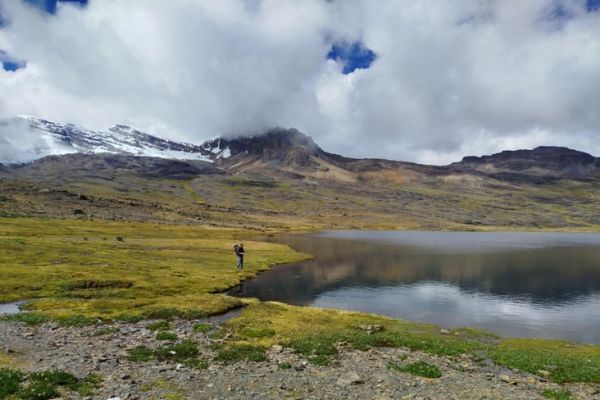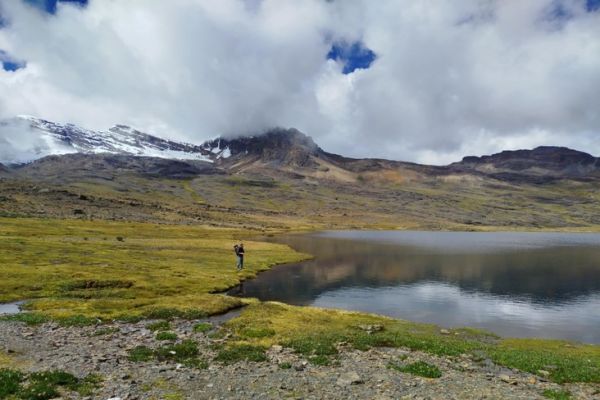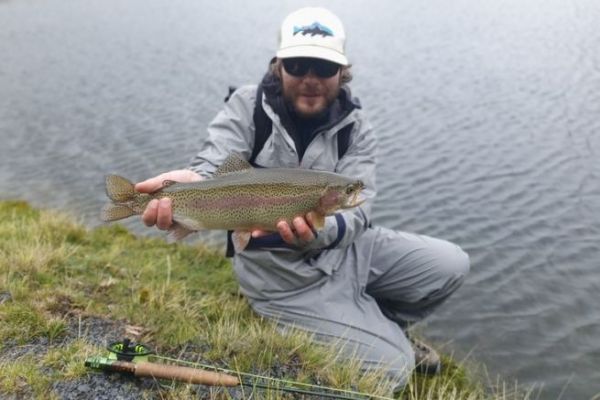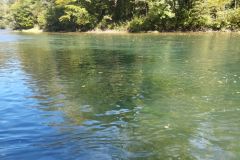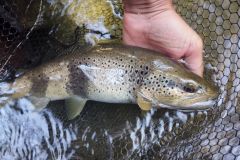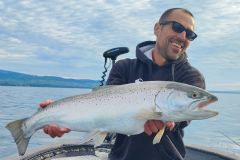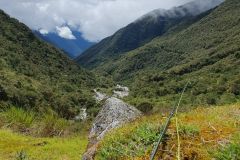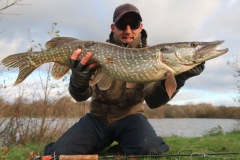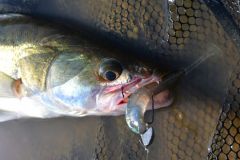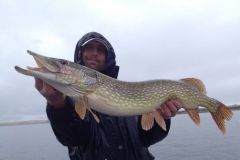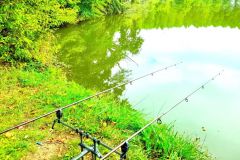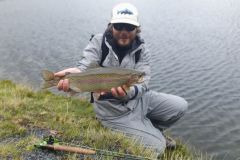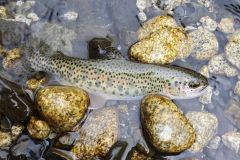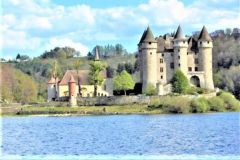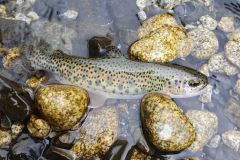Nymph fishing
Nymph fishing can prove formidable in these high-altitude ecosystems. At certain times of the day, trout can be seen rising on the plateaus in very little water. At such times, it's perfectly feasible to tempt them by sight, with light pheasant tail nymphs. Often, however, the fish are in deeper water, making it impossible to observe them.
In this case, the handled nymph remains very effective. In this case, you need to fish with much larger flies. The technique consists in covering as much ground as possible and hoping to come across an active fish. Cast as far as possible, wait for the nymph to reach the desired depth, then animate the fly by varying the line retrieve. You can "knit" or "stripe", with more or less amplitude or speed. This approach allows you to scan a large area and quickly find what works that day.
A pretty trout caught as a nymph on a simple gamarre
Streamer fishing
Streamer fishing is often the most profitable technique in high-altitude lakes. It plays on the aggressive instincts of trout, triggering attacks from fish that are not actively feeding. Large, dark or even black streamers (such as zonker or woolly bugger) are formidably effective. I like to mount them with a large bead or helmet on the head, to give them a "jig" effect that sometimes makes all the difference.
Black streamers remain a formidable weapon for big Altiplano trout
Dry fishing
At the end of the day, hatchings are common. In general, two types of insects are present on these lakes: midges, which are very small and make fishing difficult with conventional leaders and silks; and whipworms, which are larger and much easier to fish with. I've often noticed that Trichoptera, before taking flight, tend to swim on the surface of the water, creating a characteristic "V" shape. The technique consists in imitating this behavior. Fish with sedge-type flies, sized to match the day's hatch. Before casting again, it's important to bring the fly back a few centimetres to create that famous "V" of a whipworm taking off. This is often the moment when the fly hits the target.
Although fishing can be more difficult than in rivers, the size of the fish encountered in high-altitude lakes is often far more impressive. On some lakes, it's difficult to catch more than one or two fish a day. However, each cast can catch the trout of a lifetime. Personally, I still dream of catching my giant Andean trout.

 /
/ 